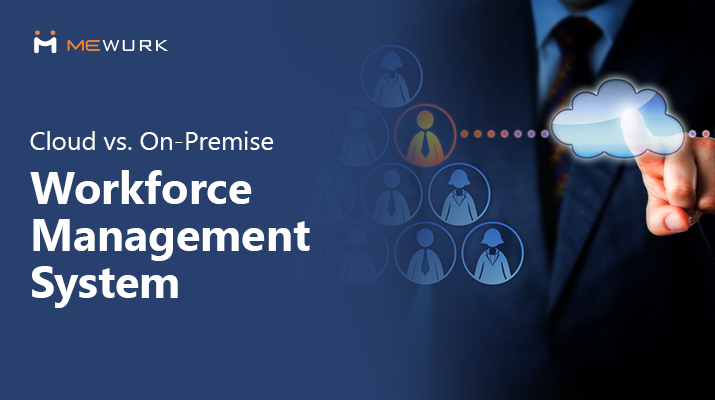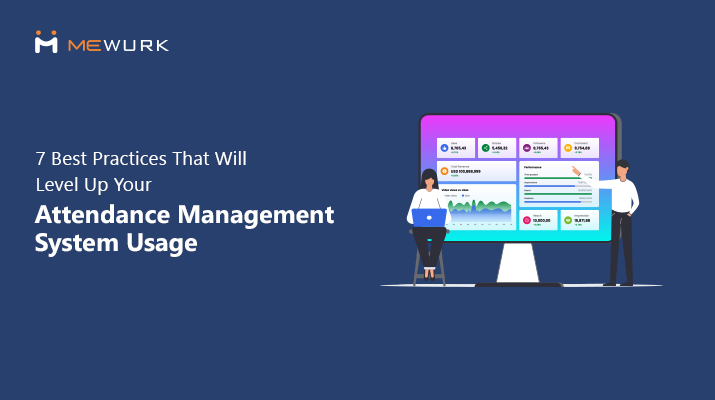
7 Best Practices That Will Level Up Your Attendance Management System Usage
Is your attendance management system truly doing all it can, or just ticking the basic boxes?
Surveys show as many as 60% of companies fail to fully utilise the potential of their attendance management software. Most businesses settle for just the basic use of it, such as to automate employee check-in and check-out processes or track worked hours.
With a quick look, it might feel that they are only disregarding some subtle features, but what they skip over are often powerful opportunities to improve the overall workplace efficiency. The challenge lies not in the employee attendance management system's lack of features, but in overlooking small details that can dramatically upgrade its performance.
That’s why we’ve compiled 7 often-ignored best practices, not the usual tips, but smart, specific moves that can turn your employee attendance management system into a proactive, reliable, and smarter tool for managing workforce presence.
Using 'Break Time' to Predict Employee Availability in Attendance Management System

Teams often track the hours employees work, but they overlook the potential benefits of tracking break time or unproductive hours. This doesn’t mean forcing employees to work during their mandatory leisure hours. However, outside of those required breaks, when there’s less work, employees usually take informal breaks. They may step out for tea or chat with colleagues. Interestingly, these moments are technically part of their productive hours.
A workforce management system with proper time and attendance tracking can offer valuable insights into these patterns. It can help predict attendance trends and improve workforce forecasting.
Best Practices in Attendance Management System
By tracking non-working hours, it becomes easier to spot signs of fatigue or early burnout. This data can be used to plan breaks more intelligently, so that employees are better able to avoid burnout in the first place.
In any organisation, it's rare for all employees to be idle at once. While some experience downtime, others may be overloaded with work. By tapping into the top features of attendance management software , like analysing the break time data, it is easy to spot imbalances early and initiate appropriate corrective actions.
Implementing Geofencing for Accurate Remote Attendance

At its core, cloud-based employee attendance solutions offer remote connectivity. They are ideal for managing attendance across dispersed teams, whether they are working from home or out in the field. This is exactly the kind of situation where geofencing makes a difference.
Yet, how many organisations have gone beyond basic employee time tracking to fully implement geofencing when faced with the challenge of how to track employee attendance remotely?
Geofencing promises enhanced capabilities in mobile attendance tracking, especially for managing field teams or remote employees. By setting virtual boundaries around designated work zones like office locations or job sites, businesses can verify that attendance is logged only when employees are physically present where they need to be.
Attendance Management System Best Practices
- Check if your attendance management system has geofencing capabilities
- Enable geofencing for remote employees to track attendance from approved locations
- Clearly communicate geofencing policies to all employees
- Regularly review and adjust geofence boundaries to match actual work zones
- Consider combining geofencing with biometric attendance tracking for enhanced security
Creating Dynamic Shift Rules for Multi-Role Teams
Despite having the best attendance management system for small businesses, many organisations struggle with shift, leave and attendance integration. This problem primarily stems from applying the same time regulations to every employee without considering individual circumstances.
Organisations need to recognise that applying a one-size-fits-all approach creates friction when different roles have fundamentally different work patterns and requirements. Front-line staff, remote workers, and field employees all have distinct needs that standard attendance policies fail to address. Implementing customised, role-specific attendance rules is the key for companies to create a more effective system that respects these differences.
Best Practices to Use in the Attendance Software
- Design separate attendance frameworks for customer-facing, administrative, and field-based employees
- Implement variable grace periods that reflect the predictability of each role's work environment
- Create flexible clock-in options for remote workers while maintaining structured schedules where needed
- Adjust attendance requirements seasonally for departments with predictable busy periods
- Use workforce management software that supports role-based rule sets to automate policy enforcement
Setting Up Real-Time Feedback Loops for Attendance
Are you missing early indicators that someone is struggling with attendance? Many workplaces discover attendance problems too late. Often, it could be during payroll processing or monthly reviews. By then, patterns of tardiness or missed shifts have already become habits and frustratingly difficult to change.
Late feedback severs the link between actions and their outcomes. Implementing immediate notification systems is what it takes to bridge this gap and ensure that attendance issues are addressed right when they occur, rather than weeks later. Employees themselves must have the space to fix issues early, before they turn into habits or land on a manager’s desk.
Best Practices
- Enable automatic notifications to employees the moment they miss a scheduled clock-in or out
- Alert supervisors/team leaders to take the correct measures when they notice attendance patterns that suggest an emerging problem
- Prioritise using attendance management software that works with biometric attendance tracking, for instance, facial recognition.
- Develop tiered response mechanisms that progress from subtle prompts to official notifications.
- Implement a mobile app that enables employees to respond to attendance issues in real time
Allowing Supervisors to Adjust Attendance Policies As Per Team Needs
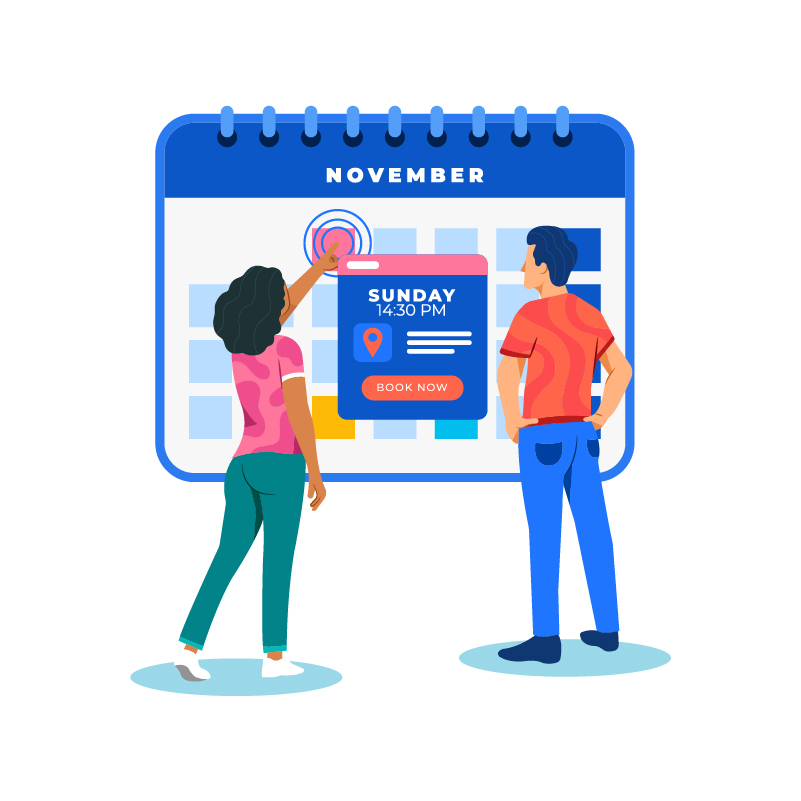
Organisations create departments to segment operations and group employees with similar responsibilities. This hierarchical structure exists for good reason. Each unit has unique workflows, challenges, and operational requirements. The managing director doesn't need to micromanage employees in any department directly. Instead, they trust department heads to handle day-to-day supervision and escalate issues only when necessary.
This same principle should extend to attendance policies. The working patterns of a sales team fundamentally differ from those of software developers or accounting staff. For effective attendance management, one needs to recognise these differences rather than enforcing uniform rules.
To give you an idea, customer service representatives require strict adherence to scheduled shifts as they are accountable for the consistent coverage for incoming inquiries, while marketing professionals might benefit from flexible hours that accommodate creative workflows and campaign deadlines. Similarly, field technicians need attendance policies that account for variable travel times between service locations, unlike warehouse staff who work in a fixed location.
Sticking to the best practices in the attendance management system can ensure both fairness and flexibility while making a world of difference.
Recommended Practices to Use in the Attendance Software
- Implement attendance management software that allows department-specific rule configurations while maintaining central oversight
- Train supervisors to develop customised attendance parameters based on workflow analysis, not personal preference
- Create a framework where core attendance principles remain consistent while allowing flexibility on specifics like grace periods
- Implement periodic review cycles in order to see to it that departmental policies remain effective and fair
- Develop clear escalation paths for employees who believe department-specific rules create inequities
Leveraging Time Off Balances in Real-Time with Attendance Management System
Employees face frustration when time-off records are outdated or inaccurate. They request leave, thinking days are available, only to discover later that their balance was incorrect. When this happens, it creates tension for the employees and administrative headaches for the concerned HR in charge. Modern cloud-based attendance management systems offer real visibility into leave balance history. Organisations can enhance these features to achieve better time balance and real-time operational insights.
Effective Practices to Try in the Attendance Management System
- Enable up-to-the-minute leave balances directly in the employee attendance portal
- Enable one-click leave requests with automated policy and balance verification
- Monitor various leave categories independently with distinct, easy-to-read visual cues for each type.
- Integrate holiday calendars to prevent accidental scheduling during company closures
- Alert employees when they approach minimum leave thresholds
Utilising AI-Powered Absenteeism Prediction
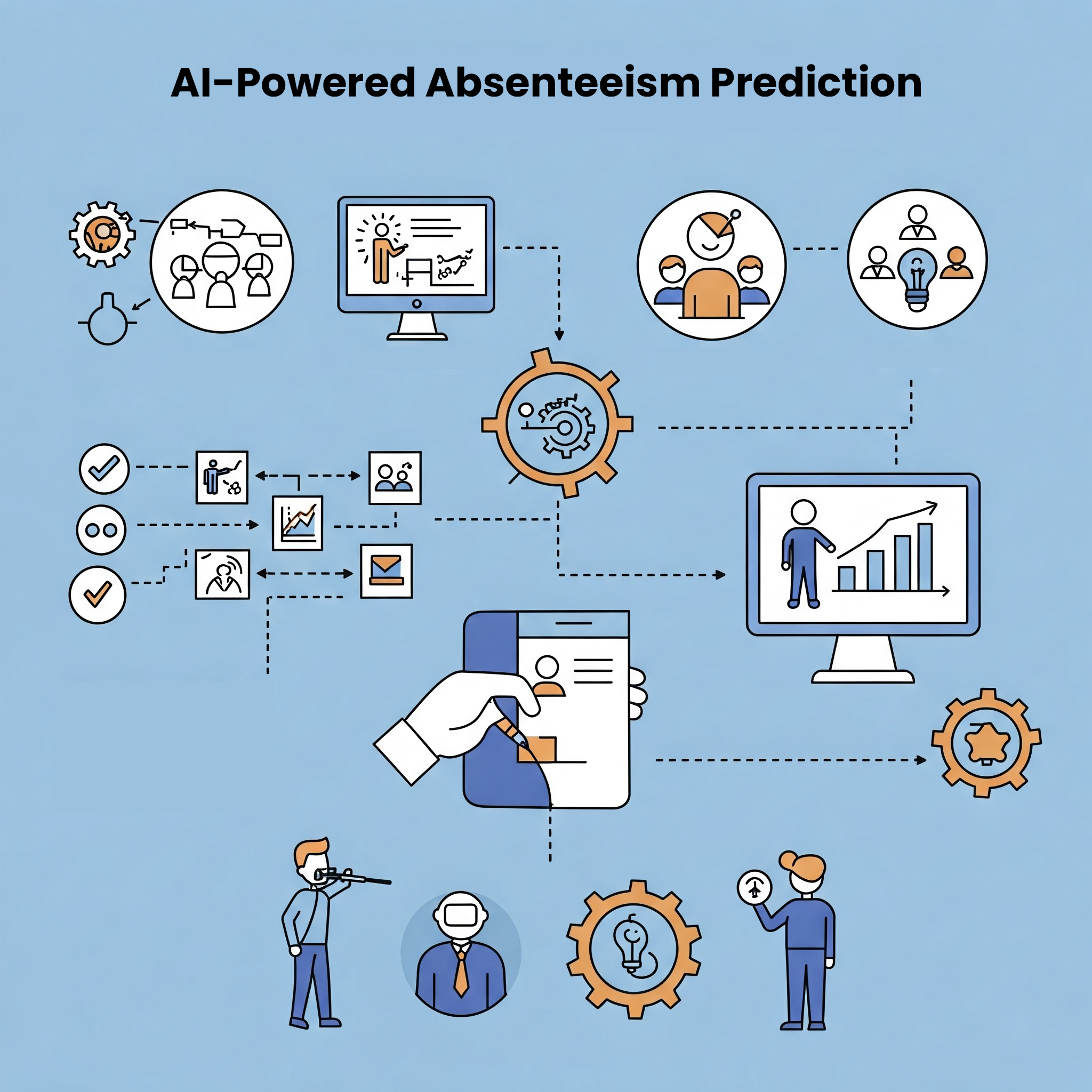
You are likely to miss out on attendance gaps or notice them too late, such as when employees fail to show up. When this happens, your managers will have to make the last-minute scheduling changes, which can lead to operational disruptions and team frustration. Without warning signs, companies can't prepare for staffing shortfalls.
This is where predictive analytics, powered by AI, makes a difference. Use attendance data exported from your attendance management system with external AI tools to run deeper predictive models and develop preventive strategies. Here is how you can optimise it for maximum workforce readiness.
Best Practices for Consideration
- Analyse seasonal, weather-related, and event-driven attendance patterns to anticipate staffing needs
- Adjust scheduling proactively based on predicted attendance rather than past absences
- Identify department-specific absence triggers before they become widespread issues
- Deploy preventive measures when the system detects early warning signs
Conclusion
Having the best time and attendance solution is one thing, and utilising it to the fullest is another. Let us assume that the 7 best practices shared here will transform the way you've been approaching attendance management and provide a fresh perspective for more effective implementation.
Mewurk is a leading employee attendance management system provider. Our solution doesn't just simplify employee attendance through biometric tracking, it helps you convert routine time data into a powerful asset for strategic workforce management. Get in touch with our team to learn more or start your free trial today.
Most Popular Post
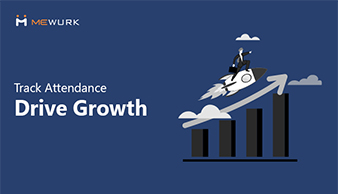
Why Accurate Attendance and Leave Management Matters for Business Growth?
Read More →Why Accurate Attendance and Leave Management Matters for Business Growth?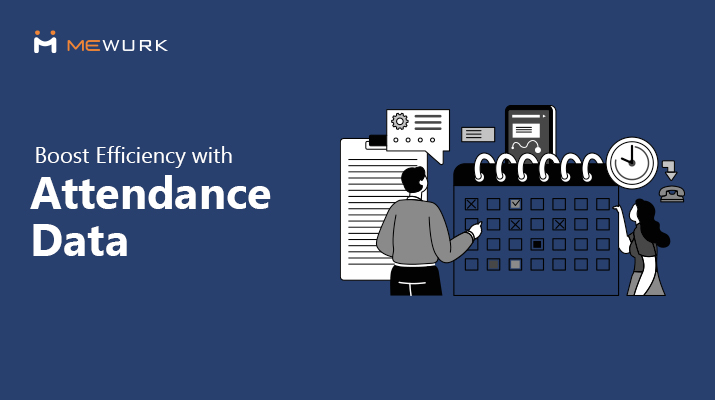
How To Leverage Attendance Data For Better Workforce Management?
Read More →How To Leverage Attendance Data For Better Workforce Management?